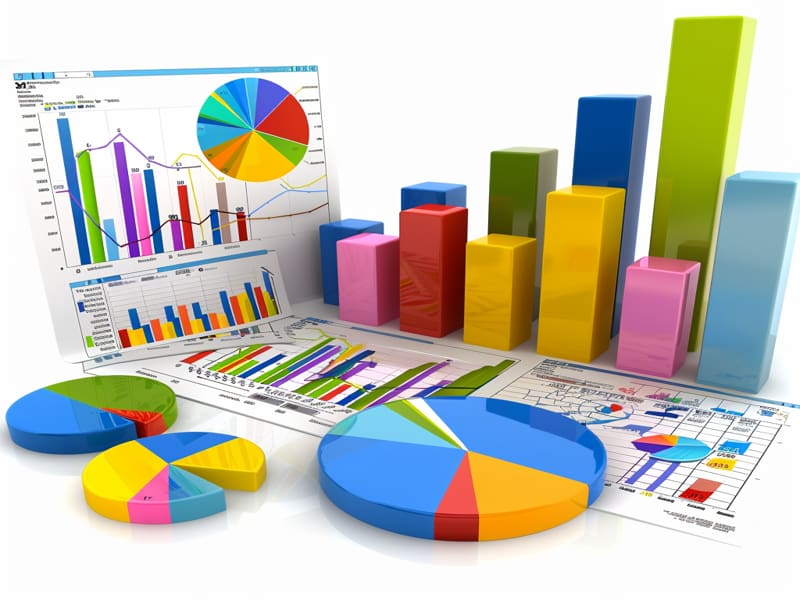SAP RAR Training | Learn SAP RAR Course
What is SAP Revenue Accounting and Reporting (RAR)?
SAP Revenue Accounting and Reporting is offered by SAP SE, the German software corporation, as a solution that assists organisations in tracking complex revenue transactions according to accounting standards such as Revenue Recognition or any regulatory obligations that might exist in their organisation.
SAP Revenue Accounting and Reporting is not just a solution. It’s a game-changer.
Automating and simplifying revenue recognition combines contract administration, order-to-cash processing, invoicing, and financial reporting functions into one powerful tool.
With SAP RAR, enterprises can manage a variety of revenue recognition methods, from straight line to percentage completion and subscription-based revenues, all in one place.
SAP RAR also features real-time reporting and analysis features that give organisations insight into their revenue performance and expose any trends that could help inform strategic decisions.
Furthermore, this revenue recognition solution ensures compliance with recent revenue recognition standards while offering a complete audit trail for regulatory reporting and internal control purposes.
Think of SAP RAR as your financial superhero.
It’s more than just an essential revenue recognition solution for enterprises with complex needs.
It’s a tool that can transform your financial reporting processes, boost productivity, and ensure compliance with accounting and regulatory standards.
With SAP RAR, you can say goodbye to mistakes and hello to streamlined financial operations.

Benefits of SAP RAR
SAP Revenue Accounting and Reporting (RAR), part of the SAP ERP system, helps firms manage complex revenue recognition procedures while complying with accounting laws.
RAR has various advantages. Here are a few reasons to use it!
Simplifying Revenue Recognition Processes SAP RAR simplifies revenue recognition processes by automating complex computations and eliminating human labour, thus decreasing errors while saving time and money.
SAP RAR can assist enterprises in maintaining data integrity by connecting revenue recognition procedures to various financial and operational systems, creating one central point of truth for revenue data.
SAP RAR is highly adaptable and customisable, meeting the revenue recognition needs of enterprises across different sectors and business types.
Businesses can tailor it to their business requirements and unique revenue recognition challenges.
Real-Time Reporting and Analytics SAP RAR provides real-time reporting and analytics capabilities, giving businesses insight into revenue performance by quickly detecting patterns or anomalies relating to revenue sources, patterns or anomalies relating to patterns or anomalies detected, to make informed judgments while taking corrective actions where required.
Integration With Other SAP Modules SAP RAR can connect to other SAP modules, such as Sales and Distribution, Finance, and Project Systems, to offer an enterprise-wide view of revenue data. This helps firms better comprehend their income sources while improving operational efficiencies.
Revenue Recognition Automation Solution by SAP RAR Improved Operational Efficiency
By automating revenue recognition procedures, SAP RAR helps enterprises save time and money, allowing them to focus their energy on core operations while driving development.

SAP RAR Training

Prerequisites of SAP RAR
To understand SAP Revenue Accounting and Reporting (RAR), it’s necessary to have a strong foundation in several key areas:
Accounting Principles include an in-depth knowledge of generally accepted accounting principles (GAAP), International Financial Reporting Standards (IFRS), revenue recognition laws and principles.
Understanding SAP Fundamentals requires an in-depth knowledge of SAP modules, data structures, and business processes.
SAP’s MM, SD, FI and CO modules can assist with revenue recognition procedures such as order-to-cash billing invoices and revenue recognition processes.
Data Structures Understand SAP data structures relevant to revenue recognition accounting, such as customer master records, sales orders and invoicing.
Customising operations knowledge, such as creating revenue recognition models, pricing models or rules, is required in SAP customisation services.
Understanding SAP integration with other systems, such as CRM and ERP, can be crucial, given its frequent need to consolidate data from various sources.
Reporting and Analysis Understanding reporting and analytics technologies such as SAP BusinessObjects or SAP Lumira is critical for creating and assessing revenue reports.
Programming Skills A basic understanding of programming languages such as ABAP or scripting languages used by SAP may prove valuable in customising revenue recognition policies for an organisation’s specific revenue requirements.
SAP RAR Tutorial
Revenue Recognition
This module examines revenue recognition methods.
Revenue is defined as any sum received as compensation from customers in exchange for goods or services delivered, not after deducting charges incurred when manufacturing these goods; profit represents all amounts received before subtracting any costs incurred to produce them.
Standard revenue recognition in SAP is generally straightforward revenues are recognised when bills are created.
However, challenges can arise when selling products or services where recognition may take longer.
Planned invoices for billing plans
In SAP RAR, billing plans are collections of rules that determine how invoices for transport orders are created and generated.
Plan invoices are generated using these principles before actual deliveries are completed or transport orders are executed.
Scheduled invoicing provides an early and accurate estimation of expected income from transportation orders, simplifying financial planning and resource allocation.
Bills generated through scheduled billing are generated based on planned delivery dates that can change.
To produce planned invoices, use SAP RAR’s transaction code Planned Invoices. With it, you can manage billing plans, create criteria to produce bills quickly and schedule them based on transport orders.
When creating an invoice, freight rates, access costs, surcharges, and discounts should all be carefully considered.
You also may determine billing frequency (monthly or weekly), invoice due dates, and preferred billing cycles (daily or weekly).
Once invoices have been created, they can be managed and monitored using the transaction code.
You may view planned invoices from here, convert them into actual ones or perform further invoice processing operations.
Utilising SAP RAR with scheduled invoices may improve accuracy and efficiency for transport order invoicing while creating greater financial transparency and control.

SAP RAR Online Training

Modes of Learning SAP RAR
Instructor-led live and self-paced training are viable ways to study SAP Revenue Accounting and Reporting (RAR).
Instructor-Led Live Training: Instructor-led Live Training sessions offer learners who prefer structured, collaborative environments an excellent educational experience.
An experienced SAP RAR consultant or trainer conducts lessons live during these SAP RAR online classes so students may ask questions of one another while also connecting to classmates through live demonstrations, group exercises and quizzes that reinforce ideas within them.
Such learning works exceptionally well when seeking hands-on experience supervised and assisted by an instructor; however, it requires more time than self-paced instructions.
Self-Paced Training: This study method is perfect for individuals who prefer learning at their speed and promptly.
Students can access SAP RAR course materials and quickly complete SAP RAR online Courses, SAP RAR online training and SAP RAR training modules.
These modules typically feature interactive SAP RAR tutorials, quizzes, and evaluations so students can more readily assess their knowledge and progress.
Self-paced learning may be advantageous to people with busy schedules who wish to study more autonomously, as it requires disciplined motivation to complete it on schedule.
Both learning methods benefit SAP RAR learning and SAP RAR class, so choosing between them ultimately depends on your learning style, timetable, and personal preferences.
Instructor-led live Training may offer more of a structured, collaborative, and organised environment. In contrast, self-paced training provides flexibility, allowing you to study at your own pace on your timetable.

SAP RAR Certification
SAP Revenue Accounting and Reporting (RAR) is an integrated system developed by SAP that is designed to assist organisations in complying with revenue recognition procedures prescribed by accounting standards such as ASC.
RAR automates this process for accurate and consistent revenue recognition reporting, producing accurate figures related to revenues and costs.
SAP RAR Certification is a program created by SAP to recognise professionals with an extensive understanding of SAP’s Revenue Recognition Analysis & Reconciliation solution and its deployment.
This certification can benefit professionals working within firms using or considering using RAR for revenue recognition procedures, financial reporting or accounting functions that utilise or plan on using this solution.
SAP RAR certification requires passing an examination issued by SAP, covering topics like configuration, implementation, customisation, data modelling, and reporting.
Acquiring SAP RAR certification enables individuals to showcase their competency to employers, colleagues, and clients – elevating their value and marketability on the job market.
Furthermore, companies will rely upon trained workers as part of their revenue recognition and reporting solutions team for accurate recognition and reporting of revenue streams.

SAP RAR Course Price


Sindhuja
Author